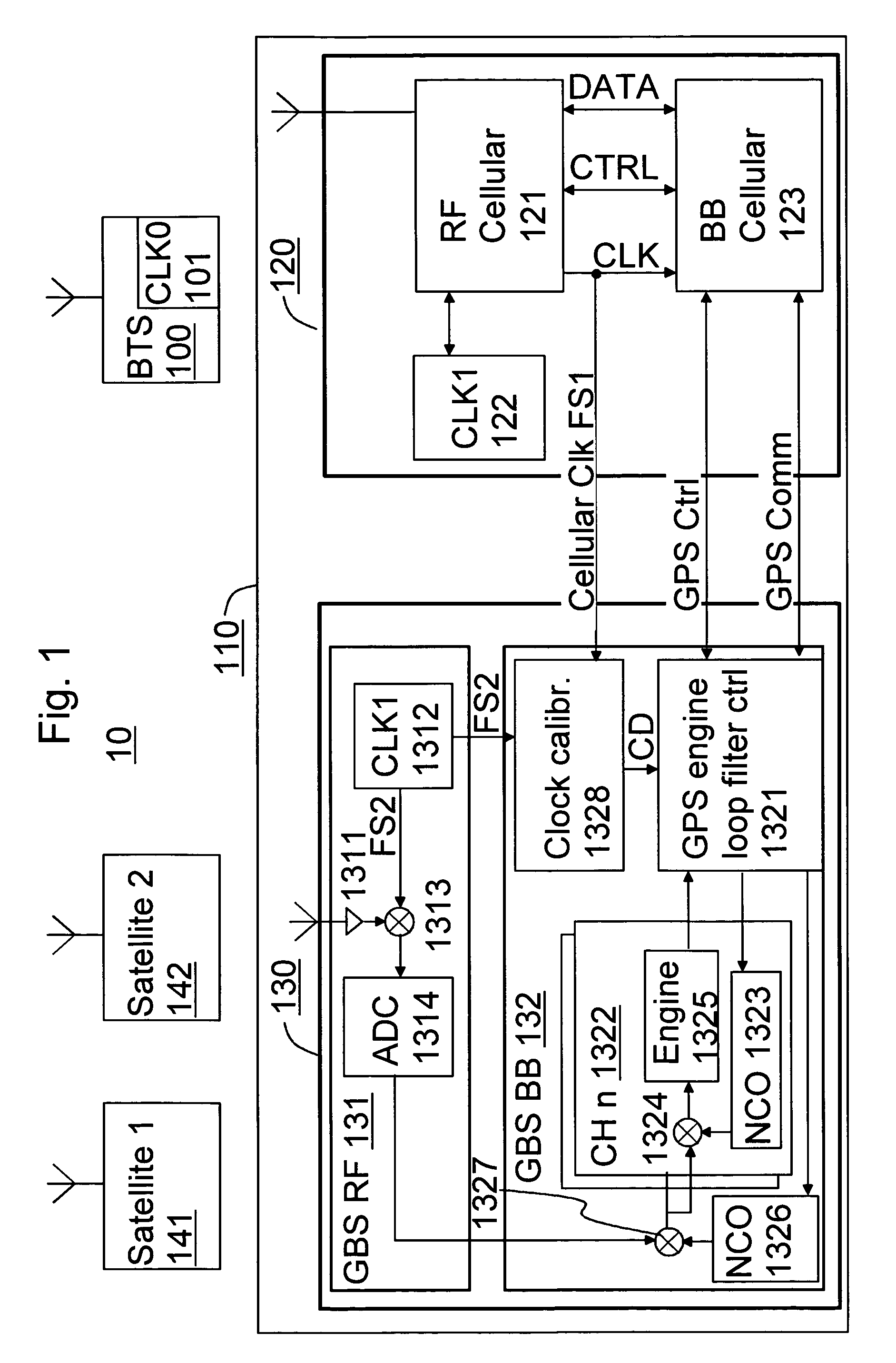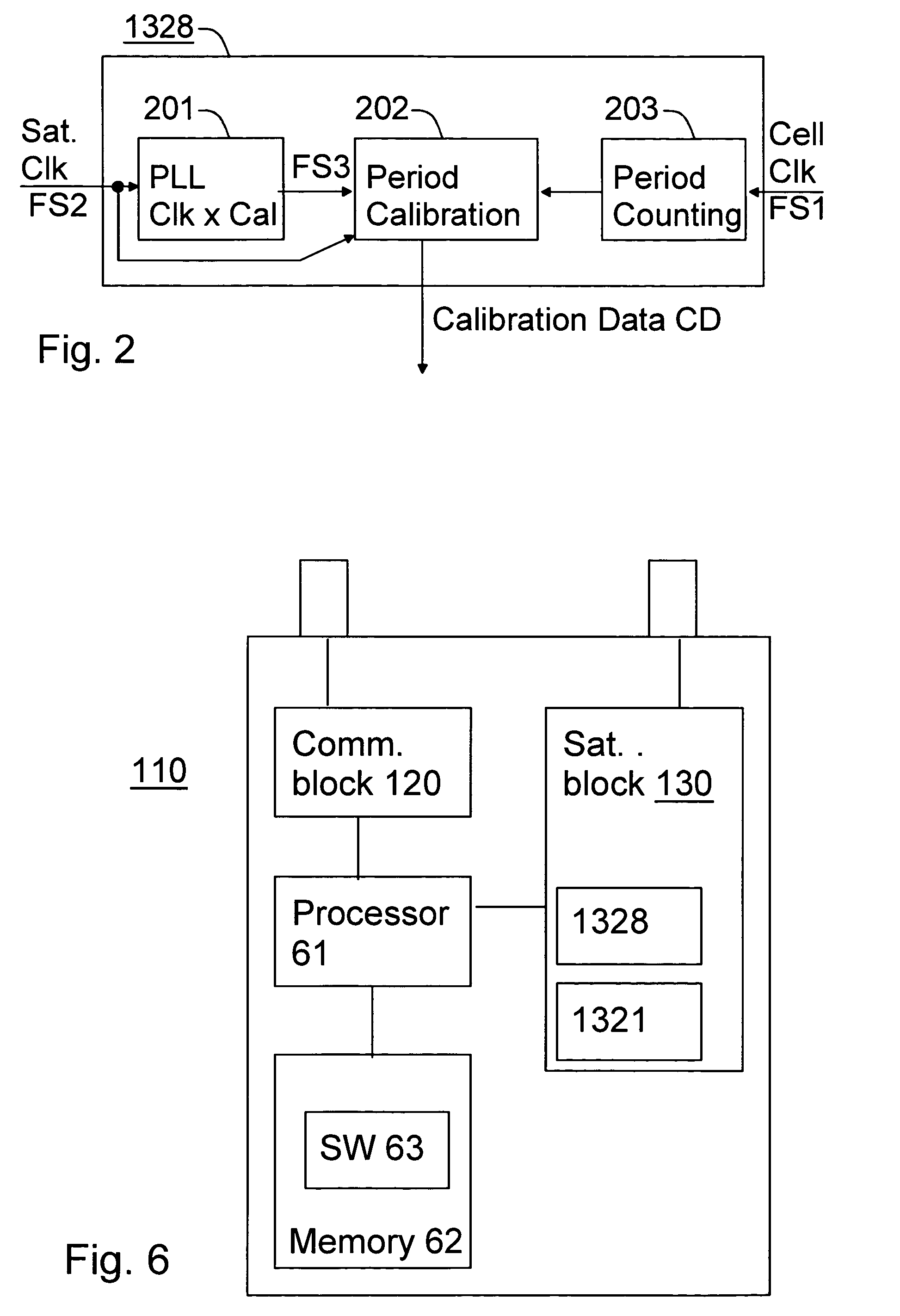Mobile positioning
a mobile positioning and positioning technology, applied in the field of mobile positioning, can solve the problems of numerous hz, 1575 mhz frequency errors, and substantial errors at the demodulator, and achieve the effects of sufficient stability in satellite signal demodulation, quick and accurate frequency compensation, and effective compensation
- Summary
- Abstract
- Description
- Claims
- Application Information
AI Technical Summary
Benefits of technology
Problems solved by technology
Method used
Image
Examples
Embodiment Construction
[0051]FIG. 1 is a simplified schematic drawing of a system 10 according to the preferred invention. FIG. 1 illustrates the components of the system useful to describe the invention, that is a base station 100, a mobile device 110 comprising a cellular communications block 120 and satellite positioning block 130, and two satellite transmitters 141 and 142.
[0052]The base station 100 comprises a base station frequency source that should control the base station so that the frequency of its radio signals is accurate to ±0.05 ppm.
[0053]The communications block 120 comprises the typical means for communicating with a cellular base station, including a cellular Radio Frequency (RF) block 121, a cellular clock 122 for producing a first frequency signal for controlling the frequencies of the RF block 122 and a cellular Base Band (BB) block 123. The communications block 120 has been connected with the satellite positioning block 130 and can communicate over a radio communication channel with ...
PUM
 Login to View More
Login to View More Abstract
Description
Claims
Application Information
 Login to View More
Login to View More - R&D
- Intellectual Property
- Life Sciences
- Materials
- Tech Scout
- Unparalleled Data Quality
- Higher Quality Content
- 60% Fewer Hallucinations
Browse by: Latest US Patents, China's latest patents, Technical Efficacy Thesaurus, Application Domain, Technology Topic, Popular Technical Reports.
© 2025 PatSnap. All rights reserved.Legal|Privacy policy|Modern Slavery Act Transparency Statement|Sitemap|About US| Contact US: help@patsnap.com



